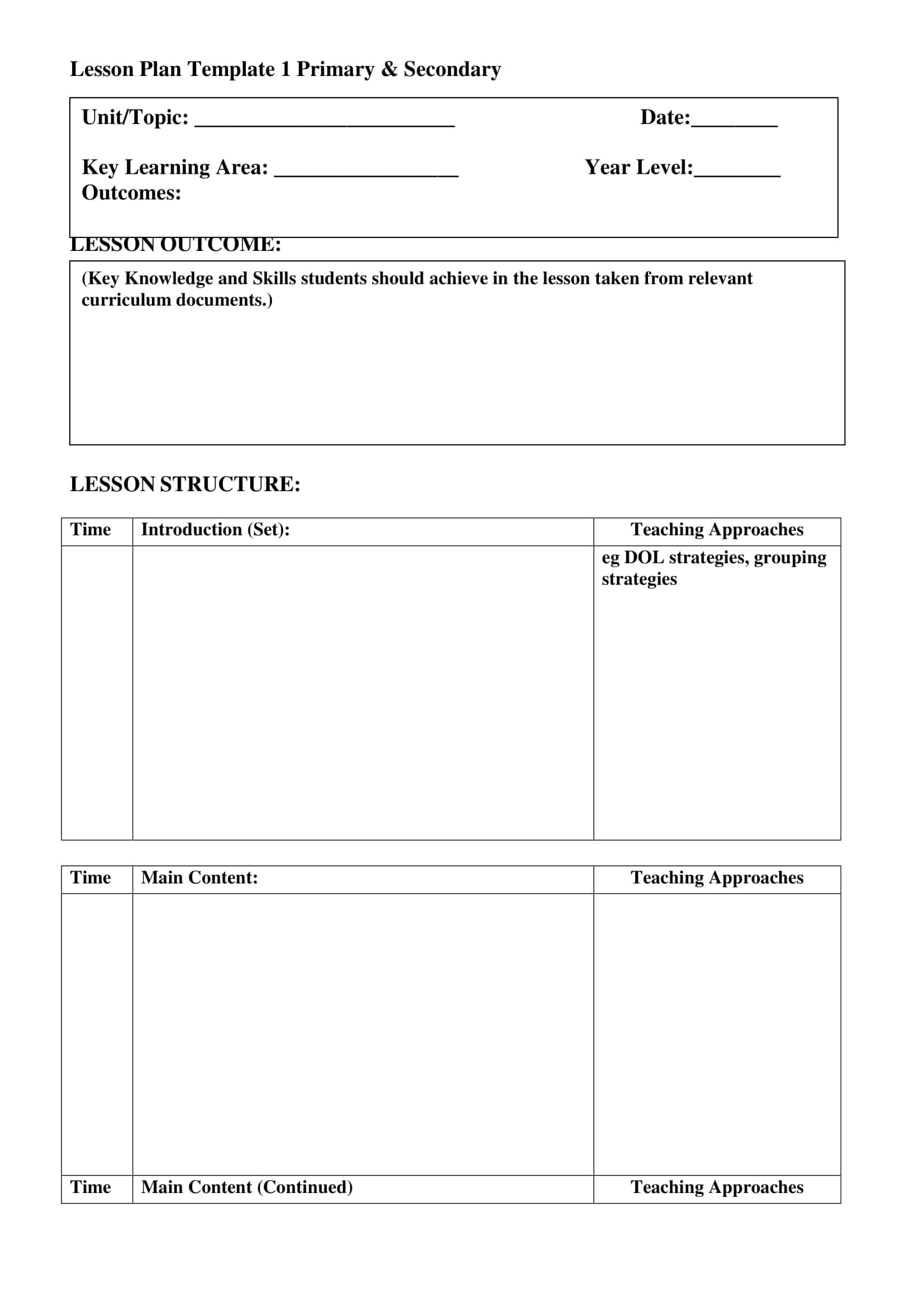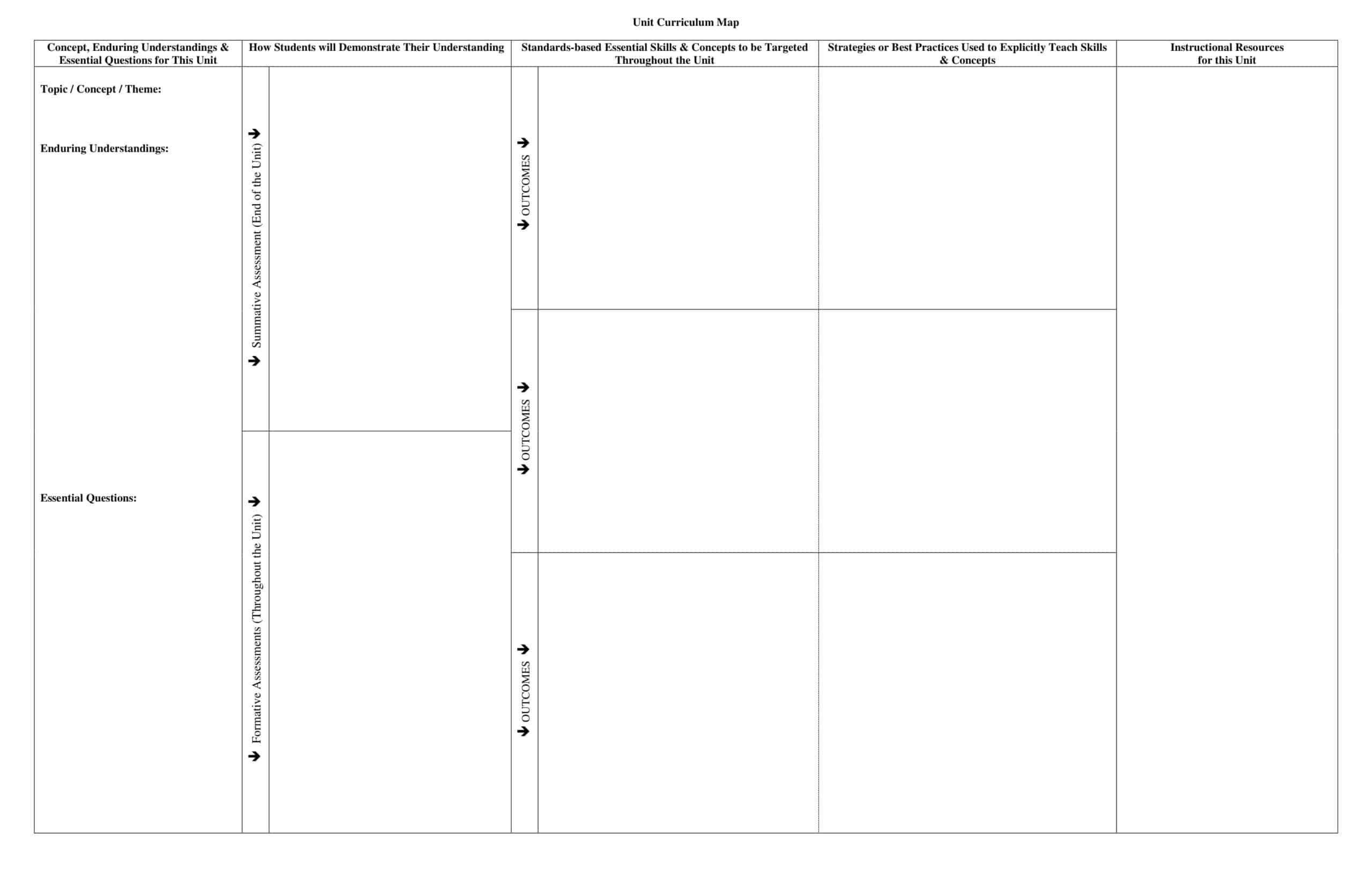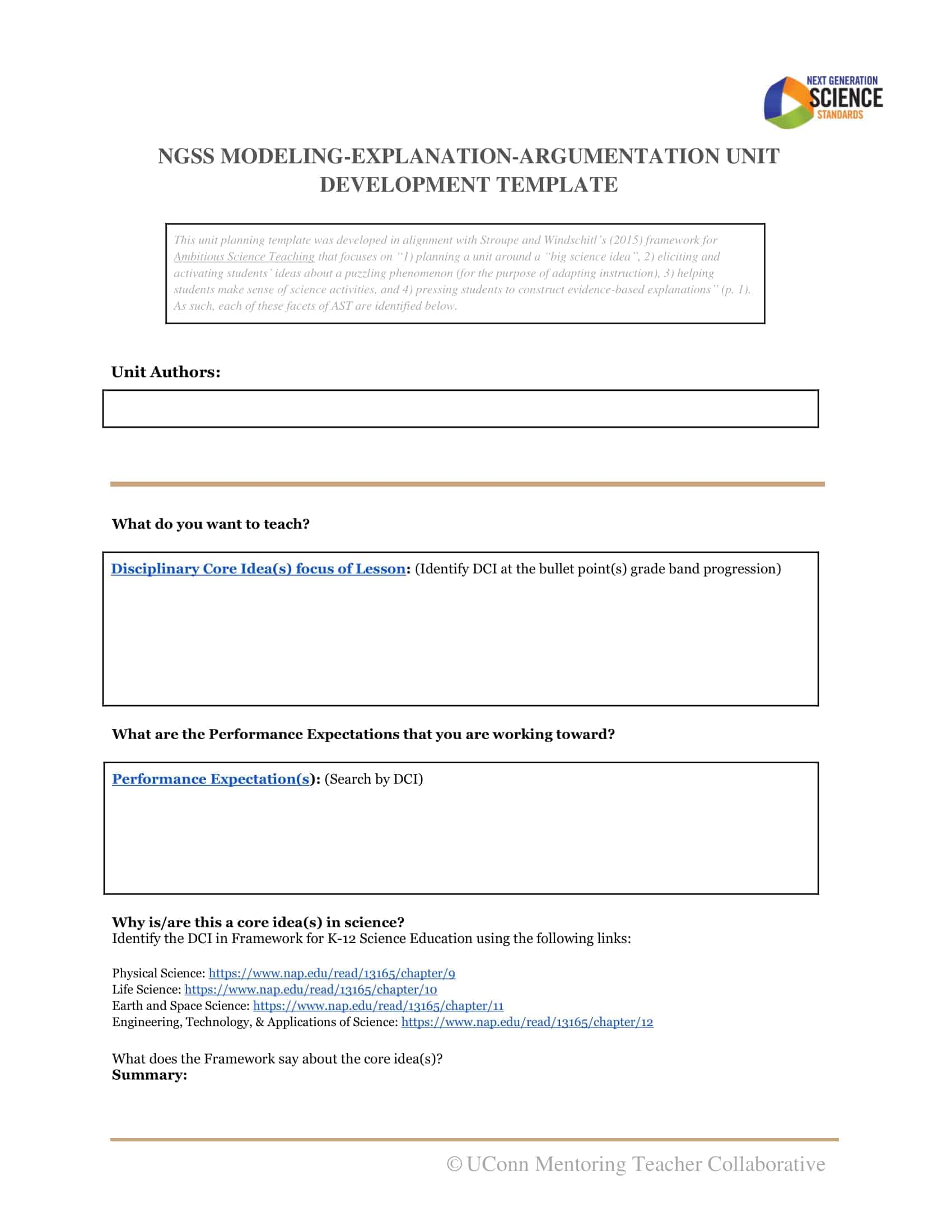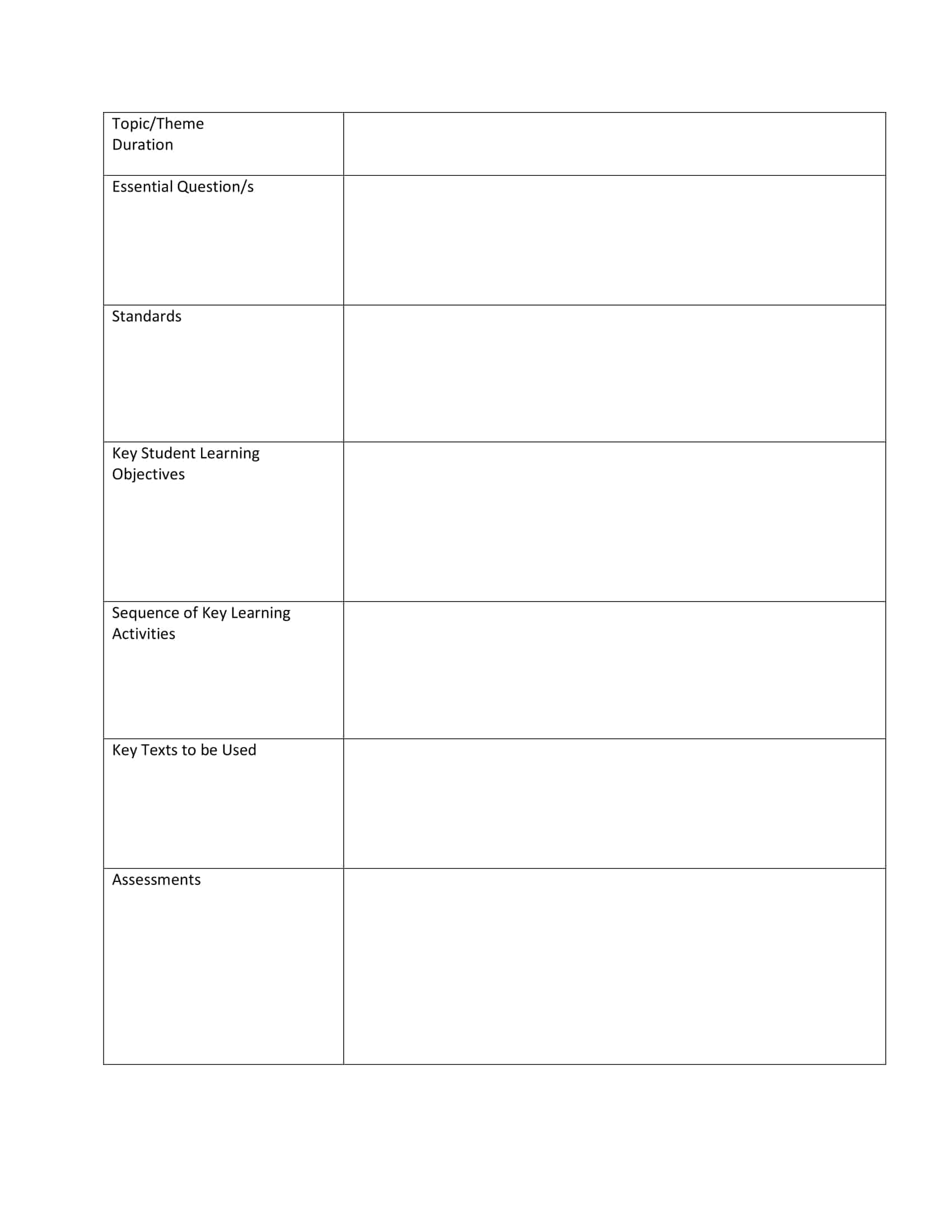Unit plan templates are essential tools for teachers as they provide a structured approach for planning and delivering lessons to students. These templates outline the content, learning objectives, and necessary resources for each lesson, ensuring that teachers are well-prepared and that their instruction is aligned with the school’s curriculum.
Whether you are a seasoned educator or new to the profession, creating a unit plan template is a necessary step in the lesson planning process. In this article, we will explore the key components of a unit plan template and provide tips on how to create your own, tailored to meet the specific needs of your students and school.
Table of Contents
The Benefits of Unit Planning

Creating a unit lesson plan offers a number of benefits for both teachers and students. For teachers, having a well-designed unit lesson plan helps to:
- Organize and prioritize content and objectives for the unit.
- Ensure that instruction is aligned with the school’s curriculum.
- Facilitate efficient and effective lesson planning.
- Save time and effort by having a clear plan to follow.
For students, a unit lesson plan helps to:
- Provide clear and consistent learning objectives and expectations.
- Ensure that instruction is focused and relevant to the student’s needs.
- Encourage active and engaged learning.
- Help students develop a deeper understanding of the content being taught.
Overall, having a unit lesson plan in place can greatly enhance the effectiveness of instruction and improve student learning outcomes.
Unit Plan Templates
Streamline your lesson planning process and enhance instructional effectiveness with our comprehensive collection of Unit Plan Templates. A unit plan is a detailed framework that outlines the scope, sequence, and objectives of a specific instructional unit.
Our customizable and printable templates provide a structured framework for designing engaging and cohesive units of instruction. Whether you’re an educator, curriculum developer, or homeschooling parent, our templates cover essential components such as unit objectives, essential questions, learning outcomes, assessment strategies, and instructional activities.
By utilizing our Unit Plan Templates, you can ensure alignment with curriculum standards, promote differentiated instruction, and foster a cohesive and meaningful learning experience for your students. With visually appealing designs and user-friendly layouts, our templates make it easier to organize and deliver high-quality instruction.
Streamline your unit planning process, maximize instructional impact, and empower student learning with our user-friendly templates. Download now and create comprehensive and effective unit plans that inspire academic success.
Key Elements of a Unit Plan Template
A unit plan typically includes several key components which are important to its structure and effectiveness. These components include:
Content: The specific topics or subject matter that will be covered during the unit.
Learning objectives: The specific knowledge and skills that students will be expected to acquire during the unit.
Assessment: The means by which the teacher will evaluate student learning and progress, such as quizzes, tests, or projects.
Materials and resources: The materials and resources that will be used during the unit, such as textbooks, videos, and other materials.
Lesson plans: Detailed plans for each lesson within the unit, including objectives, activities, and assessment.
Differentiation: Differentiation strategies that will be used to meet the diverse needs of all students, such as modifications, accommodations, or alternative assignments.
Technology: The technology, tools, and resources that the teacher will use to deliver instruction and support student learning.
Timeframe: The duration of the unit, including the start and end dates, and the number of weeks or days allocated for the unit.
Standards: The standards that the unit aligns with and what the students are expected to know and be able to do.
Each of these components is essential to the overall structure and effectiveness of the unit plan, and should be included in the template for easy reference and use.
Important Things to Consider When Writing Your Unit Plan
When writing your unit plan template, there are several things to consider in order to ensure that it is comprehensive, effective, and easy to use. Some of these things to consider include:
Audience: Consider the students you will be teaching and their needs, abilities, and learning styles. Tailor the unit plan to meet their specific needs.
Curriculum: Ensure that your unit plan is aligned with the school’s curriculum and state standards.
Objectives: Clearly state the learning objectives for the unit and make sure they are specific, measurable, and achievable.
Assessment: Include a variety of assessment methods and make sure they align with the unit’s objectives.
Differentiation: Include strategies for differentiating instruction to meet the needs of all students.
Materials and resources: Clearly list the materials and resources that will be used during the unit, including any technology or digital tools.
Lesson plans: Create detailed lesson plans for each day or week of the unit, including objectives, activities, and assessment.
Flexibility: Keep in mind that your unit plan should be flexible and adaptable to changing needs and circumstances.
Review and revision: Regularly review and revise your unit plan to ensure that it remains effective and relevant, and to make any necessary adjustments.
By considering these factors, you can create a unit plan template that is well-designed and effective in supporting student learning.
Techniques for Crafting an Effective Unit Plan Template
There are several techniques that can be used when writing a unit plan to ensure that it is comprehensive, effective, and easy to use. Some of these techniques include:
Backward design: Start by identifying the desired end results or learning outcomes and then work backwards to design instruction that will lead to those outcomes.
Align with standards: Align your unit plan with state or national standards, making sure that the unit objectives and assessments align with those standards.
Use of technology: Incorporate technology and digital tools in your unit plan to support student learning and engagement.
Differentiation: Use a variety of strategies to differentiate instruction to meet the diverse needs of your students.
Incorporate formative assessments: Incorporate formative assessments throughout the unit to check for understanding and make adjustments to instruction as needed.
Collaboration: Consider collaborating with other teachers to share resources, ideas, and best practices.
Reflect and revise: Regularly reflect on the effectiveness of your unit plan and make revisions as needed.
By using these techniques, you can create a comprehensive unit plan that effectively supports student learning and success.
How To Write a Lesson Plan
Writing a lesson plan is an important aspect of the teaching and learning process. A well-written lesson plan not only helps to ensure that instruction is focused and effective, but it also provides a roadmap for the teacher to follow during the lesson. Here is a step-by-step guide on how to write a lesson plan:
Step 1: Determine the learning objectives
The first step in writing a lesson plan is to determine the learning objectives for the lesson. These objectives should be specific, measurable, and aligned with the curriculum and standards. The learning objectives should be clearly stated at the beginning of the lesson plan and should guide the development of the entire lesson.
Step 2: Select the content
Once the learning objectives have been determined, the next step is to select the content that will be covered during the lesson. This content should be relevant to the learning objectives and should be appropriate for the students’ age, ability, and interest level.
Step 3: Plan the instruction
Once the content has been selected, the next step is to plan the instruction for the lesson. This includes determining the teaching methods, activities, and assessments that will be used during the lesson. The instruction should be designed to engage the students and to promote active learning. It is also important to include differentiation strategies to meet the diverse needs of all students.
Step 4: Determine the materials and resources
The next step is to determine the materials and resources that will be used during the lesson. This includes any textbooks, handouts, videos, or other materials that will be needed. It is also important to consider any technology or digital tools that will be used to support student learning.
Step 5: Develop the assessment plan
The assessment plan should include a variety of formative and summative assessment methods that align with the learning objectives. Formative assessments, such as quizzes, checks for understanding, or exit tickets, can be used to check student understanding during the lesson and make adjustments as needed. Summative assessments, such as tests or projects, can be used to evaluate student learning at the end of the unit.
Step 6: Review and revise
It is important to regularly review and revise your lesson plan to ensure that it remains effective and relevant. This includes reflecting on the effectiveness of the instruction, assessing student learning, and making any necessary adjustments.
Note: Writing a lesson plan can seem like a daunting task, but by following these steps, it can be a manageable and rewarding process. A lesson plan is a road map for the teacher, it helps to organize instruction, and it provides a clear understanding of what the students should learn by the end of the lesson, it also helps to focus on what is important. Additionally, it enables the teacher to be more prepared, and it can help to save time and effort.
FAQs
Why is a unit plan important?
A unit plan is important because it provides a structured approach for planning and delivering instruction, ensuring that instruction is aligned with the curriculum and standards, and that the teacher is well-prepared. It also helps to promote student engagement and learning.
How often should I review and revise my unit plan?
It’s recommended to review and revise your unit plan regularly, such as at the end of each unit or semester, to ensure that it remains effective and relevant.
How can I involve students in the unit planning process?
One way to involve students in the unit planning process is to provide opportunities for them to provide feedback and input on the unit plan, such as through student surveys or focus groups. Additionally, you can involve students in goal setting, and in setting up the assessment criteria.
How do I differentiate instruction in a unit plan?
Differentiation strategies can be incorporated into a unit plan by providing multiple means of representation, expression, and engagement. For example, using different teaching methods, providing different levels of texts, or providing alternative assignments can help to meet the diverse needs of all students.
How do I align my unit plan with the curriculum?
To align your unit plan with the curriculum, it’s important to review the curriculum and standards, and to ensure that the learning objectives, content, and assessment methods align with those standards.
Can I use a pre-made unit plan template?
Yes, pre-made unit plan templates can be used as a starting point, but it’s important to tailor the template to meet the specific needs of your students and school.
How do I make sure my unit plan is engaging for students?
To make sure your unit plan is engaging for students, it’s important to include a variety of teaching methods, activities, and assessments that promote active learning and student engagement. Incorporating technology and digital tools can also help to enhance student engagement.
Can I share my unit plan with other teachers?
Yes, sharing unit plans with other teachers can be beneficial as it allows for collaboration, idea sharing and can help to improve the instruction for all the students.






































![Free Printable Roommate Agreement Templates [Word, PDF] 1 Roommate Agreement](https://www.typecalendar.com/wp-content/uploads/2023/06/Roommate-Agreement-150x150.jpg)
![Free Printable Credit Card Authorization Form Templates [PDF, Word, Excel] 2 Credit Card Authorization Form](https://www.typecalendar.com/wp-content/uploads/2023/06/Credit-Card-Authorization-Form-150x150.jpg)
![Free Printable Stock Ledger Templates [Excel,PDF, Word] 3 Stock Ledger](https://www.typecalendar.com/wp-content/uploads/2023/08/Stock-Ledger-150x150.jpg)
